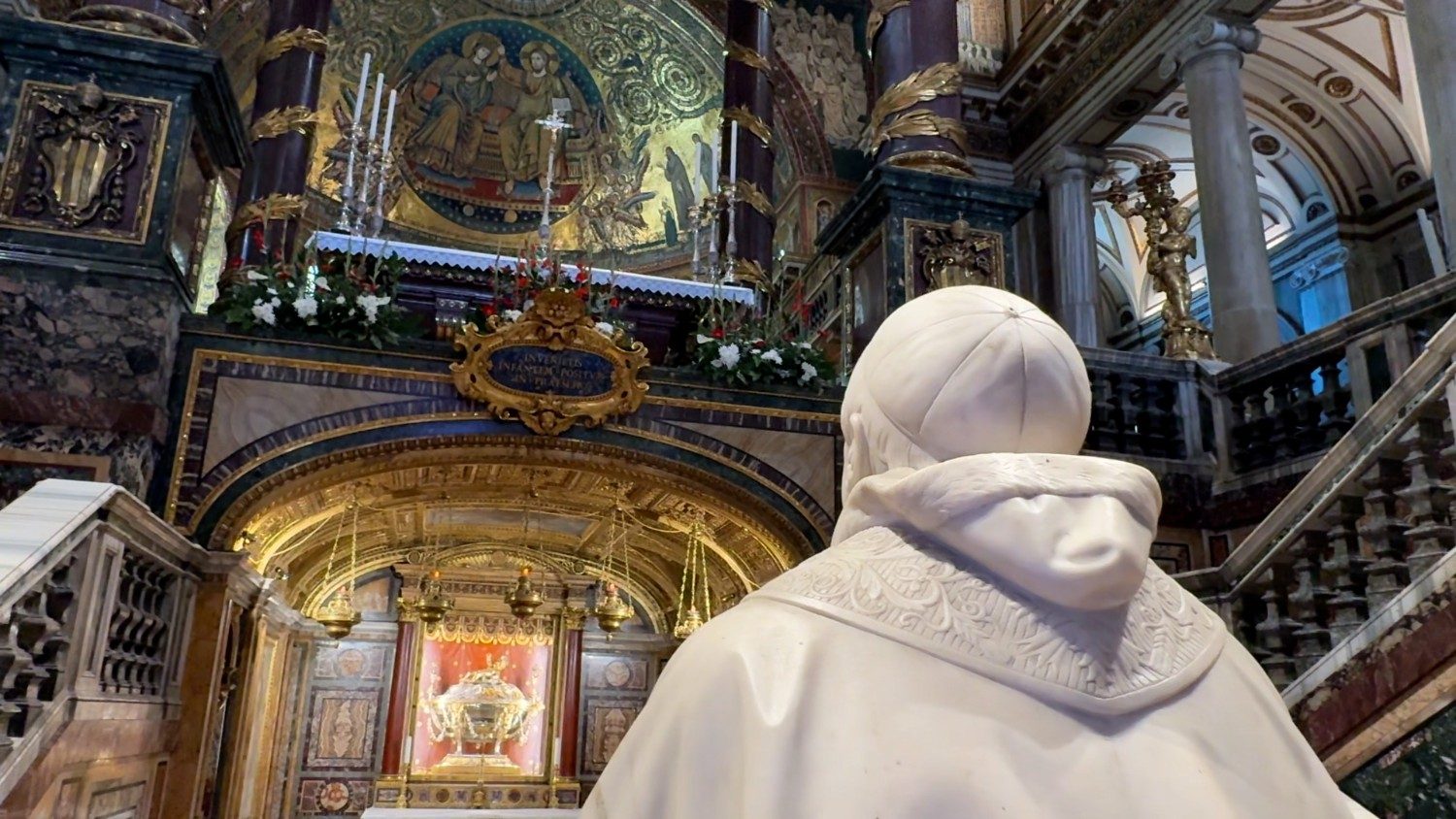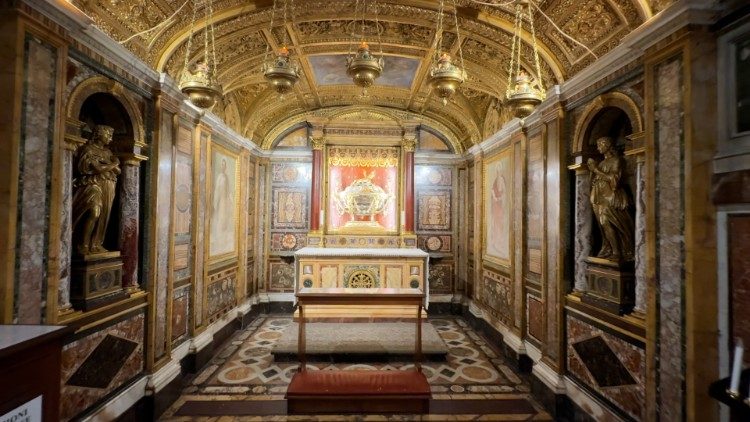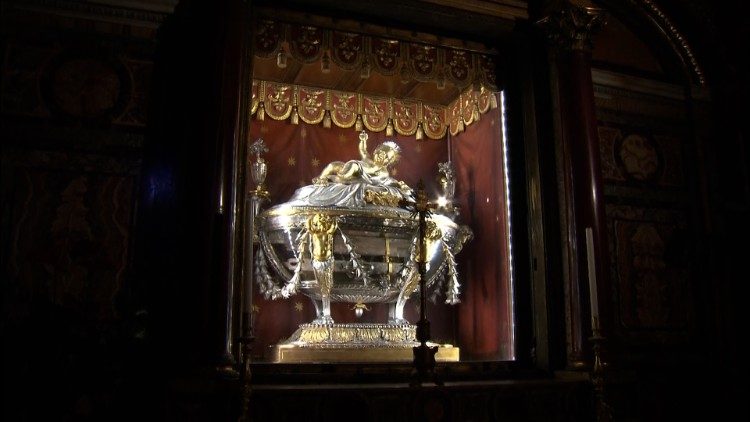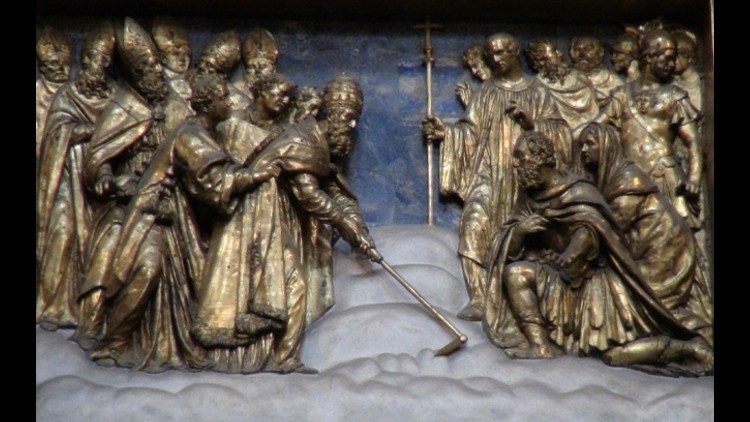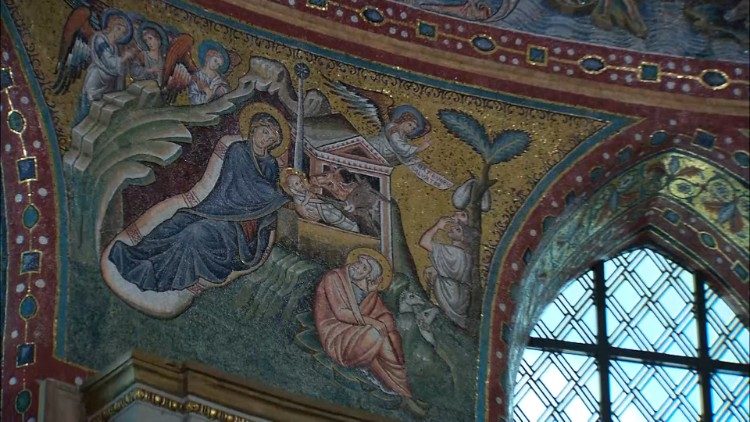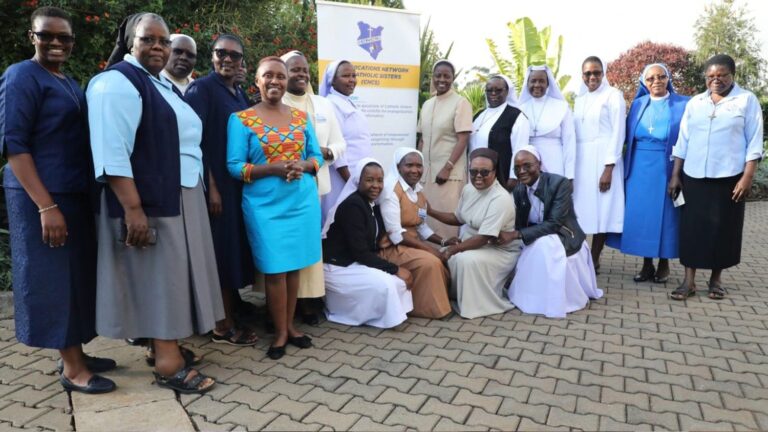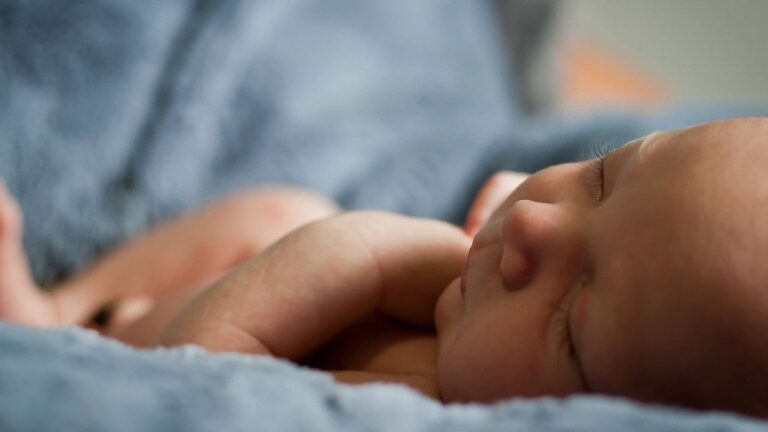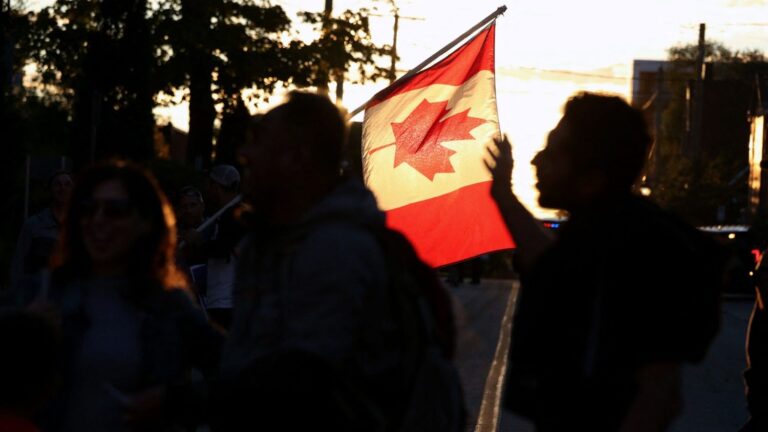Bethlehem of Rome: St. Mary Major and the relics of the Holy Crib
As the Church celebrates the Solemnity of Our Lady of the Snows, we explore the ancient tradition that connects Santa Maria Maggiore, Rome’s first Marian basilica, to the birthplace of Jesus Christ in the Holy Land.
By Paolo Ondarza
The Basilica of Santa Maria Maggiore in Rome owes its origin to a prodigious event: a snowfall in Rome in the middle of summer. The Virgin had revealed the miracle in a dream to Pope Liberius, the 36th successor of Peter.
It was on August 5, 359, that the Esquiline Hill became white. A snowfall in the middle of summer marked out the perimeter on which the basilica dedicated to the Blessed Virgin Mary was to be built.
The Basilica of Santa Maria Maggiore became known as the Liberian Basilica in honor of its founder, Pope Liberius.
Pope Francis will travel on the afternoon of Monday, August 5, 2024, to participate in the Second Vespers on the occasion of the anniversary of the dedication of the papal basilica and the solemnity of Our Lady of the Snows. The celebration, presided over by the Coadjutor Archpriest, Archbishop Rolandas Makrickas, will begin at 5:30 p.m.
“The original temple was certainly not like this. It was a much more modest basilica, with a single nave,” Monsignor Ivan Ricupero, master of liturgical celebrations at St. Mary Major, told Vatican Media. “The rest was added over the centuries. In fact, the basilica was rebuilt in 432 by Pope Sixtus III. The mosaics of the triumphal arch recall that historical moment.”
With Sixtus III, the basilica took on the character of a “second Bethlehem”. An oratory of the Nativity was built inside. This reproduction of the grotto where Jesus was born was built with stones from the Holy Land. Furthermore, around the middle of the 7th century,th-century, in 644 to be exact, the precious gift that the Patriarch of Jerusalem at the time, Saint Sophronius, had offered to Pope Theodore I, a native of Jerusalem, arrived in Jerusalem. It was the relic of the Holy Crib or cunable.
At that time, numerous Persian raids devastated many places linked to the memory of the life of Christ. The future saint, monk and theologian, a fervent defender of Orthodoxy, offered the pontiff five pieces of sycamore from the manger in Bethlehem, as well as the cloths in which, according to tradition, the little body of Jesus was wrapped. These relics are still preserved today inside the crystal reliquary decorated with silver bas-reliefs, made by Giuseppe Valadier at the beginning of the 19th century.
The reliquary is located in the Confession, Pius IX had this basilica decorated with more than 70 different types of marble. A giant statue of Pius IX kneeling, looking towards the mosaic in the apse depicting the coronation of Notre-Dame, was erected in his honor.
It is therefore no coincidence that the Liberian basilica, called for centuries Saint Mary of the Meadowsbecame a destination for Christian pilgrims during the Christmas holidays, as well as an object of great devotion and munificence on the part of pontiffs and sovereigns.
“Since then,” continues Msgr. Ricupero, “the vigil Mass has been celebrated in this basilica. This practice was then transmitted and became a liturgical tradition of the Catholic Church throughout the world.”
For centuries, on the night of December 24, the Pope presided over Holy Mass, and until before the Covid-19 pandemic, the reliquary was carried in procession along the naves while the Gloria was sung.
“Last year,” the priest explains, “we decided to display it again outside its case, placing it high up, so that it could be venerated on Christmas Eve and until the day of Epiphany.”
Thanks to a sophisticated system of pulleys and winches designed by the architect Domenico Fontana, the ancient Oratory of the Nativity, which was originally located in the right nave of the Basilica, was moved under the imposing gilded bronze tabernacle of the monumental Chapel of the Most Holy Sacrament, whose construction had been requested by Pope Sixtus V Peretti, in accordance with the norms of the Council of Trent.
Surrounded by frescoes dedicated to the ancestors of Christ and to the stories of the Virgin, the Renaissance pope is depicted on the left wall of the chapel of the funerary sanctuary dedicated to him. He is shown in prayer, his gaze turned towards the medieval altar of the Oratory of the Nativity where, on the Christmas nights of 1517 and 1538, respectively, Saint Cajetan of Thiene had a mystical vision of the Child Jesus, and Saint Ignatius of Loyola celebrated his first Mass.
“The founder of the Society of Jesus,” explains Msgr. Ricupero, “would have liked to celebrate it in Bethlehem, but he was unable to do so due to a series of events. He then decided to celebrate it here, in Santa Maria Maggiore, considered the ‘Bethlehem of Rome.'”
This is where the oldest nativity scene sculpture in history was placed. Made by Arnolfo Di Cambio, it was commissioned by the first Franciscan Pope, Nicholas IV, less than 70 years after the living representation of the nativity scene of Saint Francis in Greccio.
From this unique masterpiece of medieval plastic art, also recalled by Vasari, at least five original marble statues have survived: the figures of Saint Joseph, of two standing Magi, of a kneeling Magi in prayer, of the heads of the ox and of the donkey.
Added to this is the Madonna and Child seated on a rock, of larger dimensions, about one meter high. The attribution to Arnolfo of this last image, which according to some scholars was heavily modified in the 16th century, has caused controversy. Traces of pigment on the stone indicate that the original crib, whose exact number of statues is unknown, must have been colored.
Like the shepherds called by the angel for the birth of the Savior, in the Holy Year 2025, many pilgrims will visit the Liberian Basilica, the “Bethlehem of the West.”
As they cross the vast liturgical space, their gaze is drawn to the countless mosaics, paintings and sculptures of great value; to the precious relics of the Virgin’s mantle, the hay of the panniculus, the linens that wrapped the body of the Child Jesus. Finally, the pilgrims stop in front of the Hello Roman Peoplethe ancient Roman icon that tradition attributes to Saint Luke, patron saint of artists, but which more recent studies date back to a period between the 9th and 10th centuries.th and 11th centuries.
The image is very dear to the popes, noted Msgr. Ricupero, “and in particular to Francis, who comes here before and after each apostolic journey. The devotion is very popular among the Jesuits: few know that Matteo Ricci, when he began his mission in China, received a small copy of the icon of the Virgin Mary. Hi of the pope that he took with him.
At the heart of the Jubilee visit to Santa Maria Maggiore is a prayer stop at the foot of the main altar, on the relics of the Holy Crib, whose historical and devotional value has been verified by recent scientific studies.
Pollen extracted from the inside of pieces of sycamore has allowed us to trace the geographical region of Bethlehem back to the time of Jesus. This is confirmation of what has been attested for centuries by, among others, Saint Jerome, whose mortal remains were preserved precisely in Santa Maria Maggiore.
“The samples,” recalled the master of liturgical celebrations of the basilica, “were taken in 2018.” On that occasion, Pope Francis had decided to donate a fragment of the venerated wooden relic to the Custody of the Holy Land.
The Pope will open the Holy Door of Saint Mary Major on January 1, 2025, the solemnity of Mary Most Holy Mother of God.
“Since 1390,” concludes Msgr. Ricupero, “there is evidence of the existence of a Holy Door through which the faithful could pass to receive the gift of indulgence. A visit to this basilica linked to the Nativity is an opportunity for pilgrims and tourists to get closer to the great mystery of the Incarnation.”
